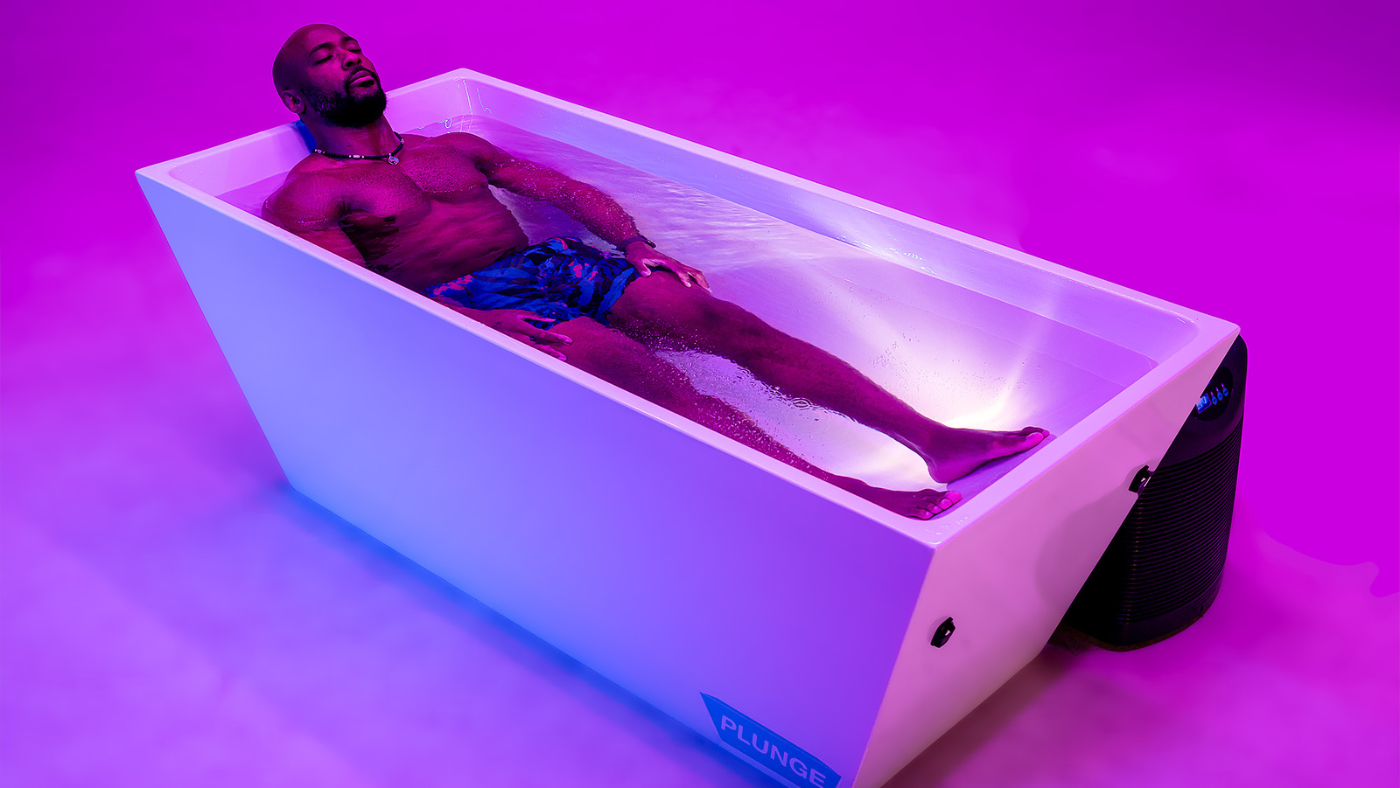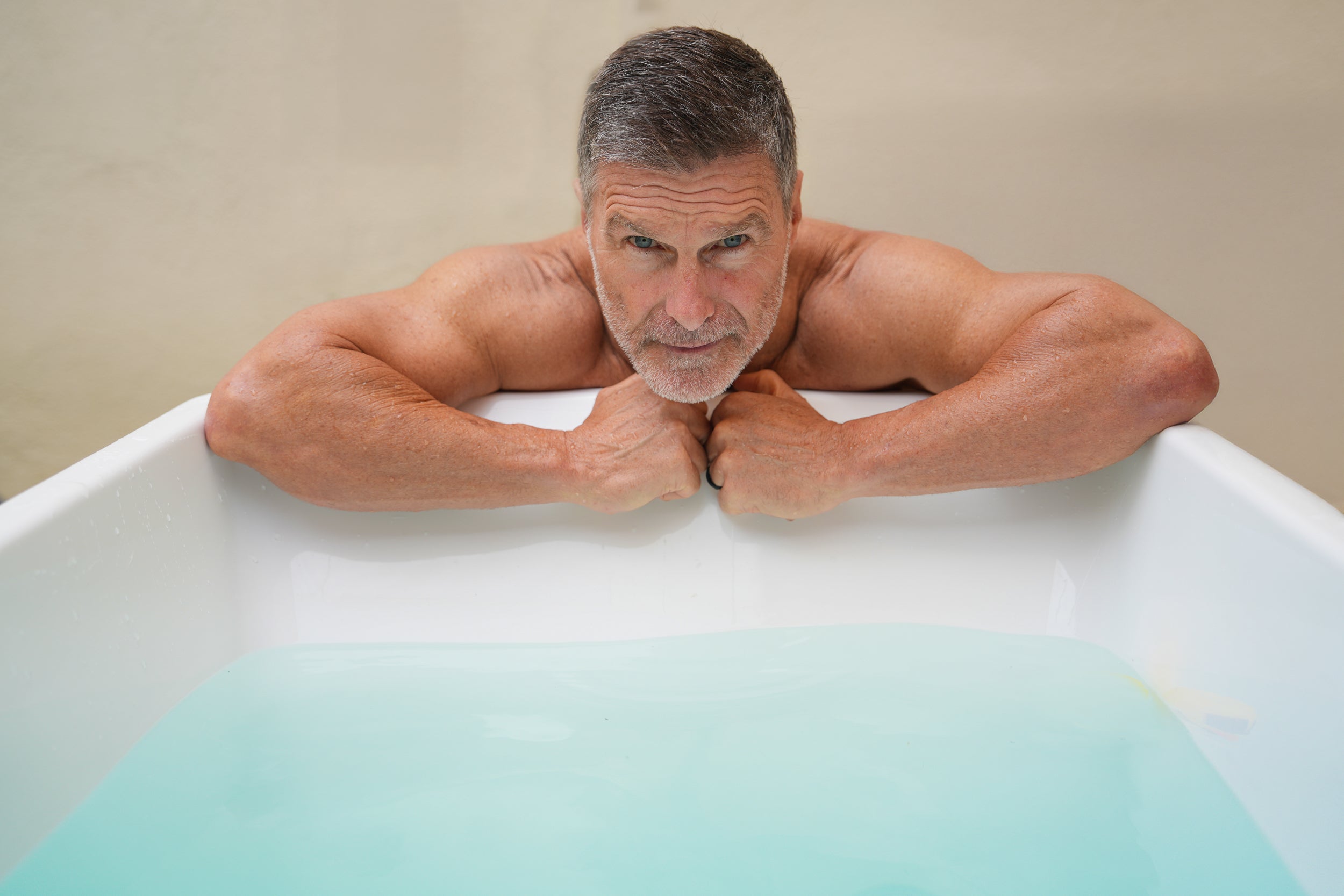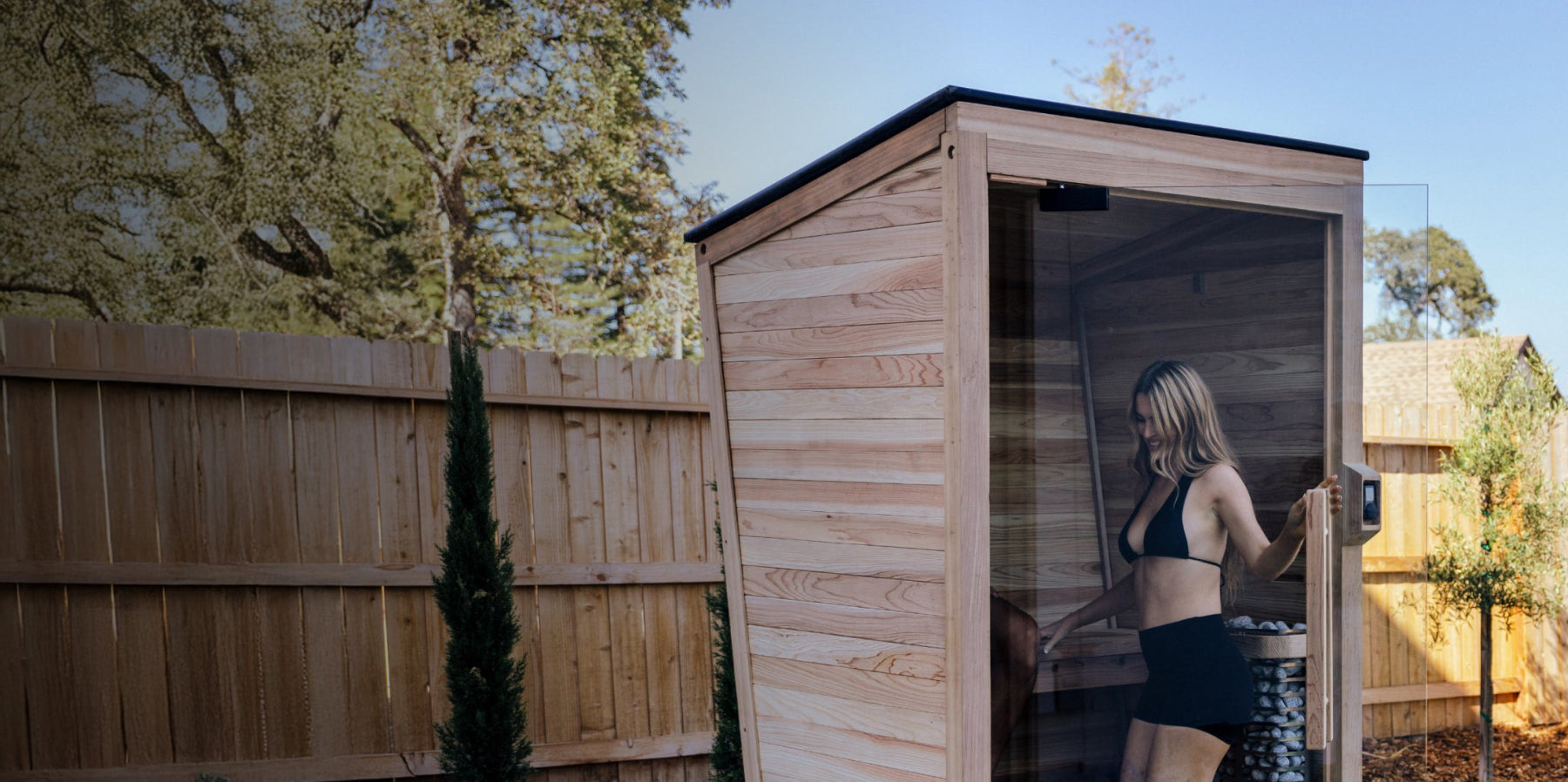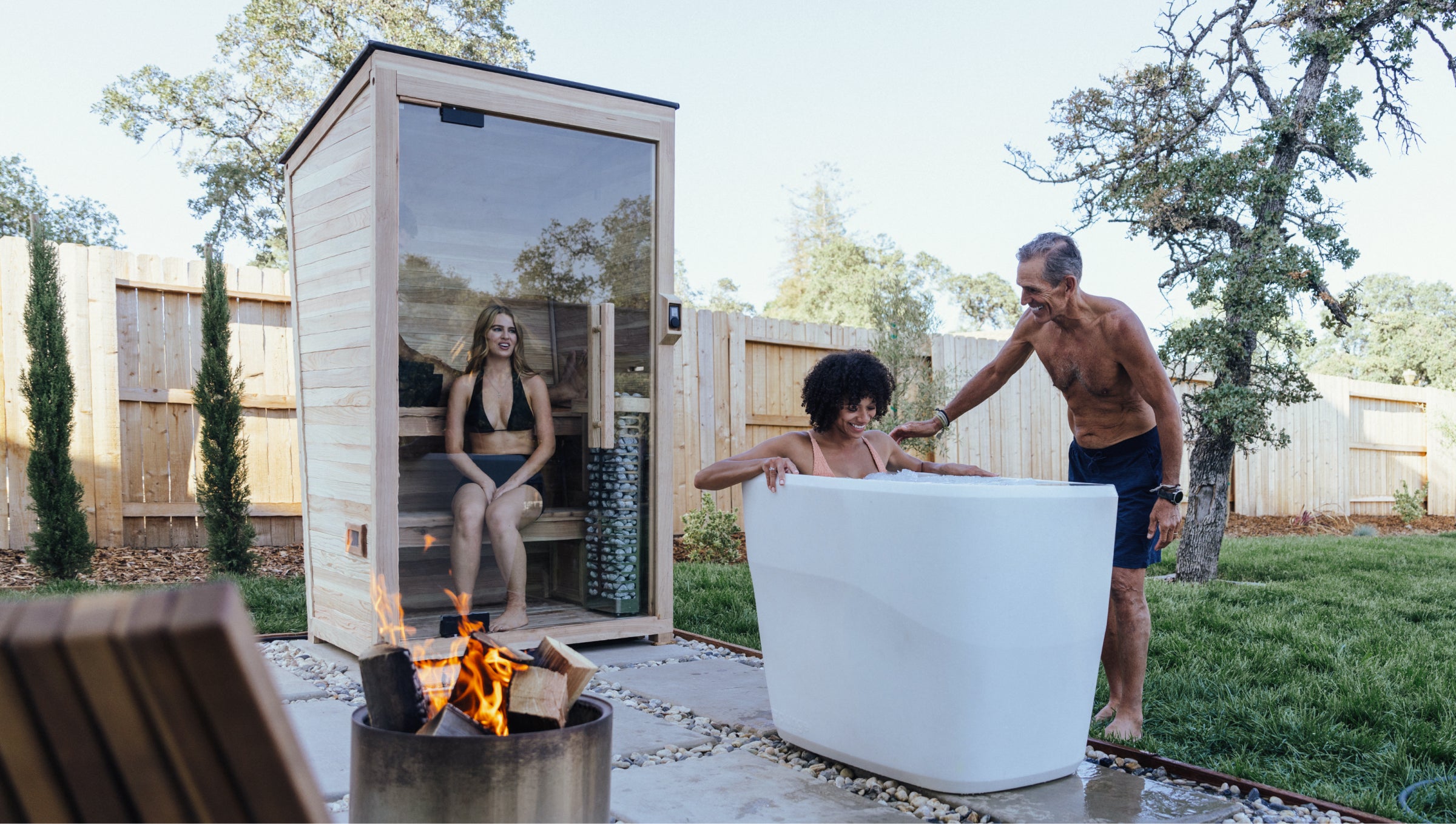
8 Tips For Doing Contrast Therapy: How to Get More Out of Your Sessions
If you're an athlete or someone who takes your fitness and health seriously, you may have heard of the benefits of hot and cold therapy (aka contrast therapy). If you haven’t heard of it before or just need a refresher, we’ll give you a quick rundown of some of its benefits and some tips on how to best use contrast therapy to get maximum results.
What is Contrast Therapy?
Contrast therapy involves alternating between periods of hot and cold temperatures. This allows you to maximize both benefits, as a recovery technique to treat physical pain, injuries, and soreness. Individually, hot therapy and cold therapy are both popular recovery methods and when applied correctly and together, you can get even more benefits to help reduce inflammation, improve circulation, and speed up the healing process.
Individual Benefits of Hot & Cold Therapy
There is a reason that hot and cold therapy is so popular with athletes or those serious about injury prevention and treatment. There are many benefits to using both individually and together.
Let's first start with each of their individual upsides:
Benefits Of Heat Therapy
Heat therapy, or thermotherapy, is typically used for chronic injuries or conditions that are slow to heal. Heat therapy has a range of benefits, including:
- Increases circulation to the specific area it is applied to by expanding blood vessels (vasodilation)
- Reduces pain, while at the same time relieving aching muscles and cramping
- Speeds up the healing process by drawing nutrients to the injured area
- Helps the body to get rid of waste products via detoxification
Popular heat therapy methods include saunas, steam rooms, hot showers, hot tubs, heating pads, and wraps.
What's important to note about this therapy method is that it can make inflammation worse, so it should be avoided if you’re running a fever or have inflammation around a recent injury.
Benefits Of Cold Therapy
Cold therapy, on the other hand, is usually used for acute injuries or conditions that are currently inflamed or swollen. It causes vasoconstriction (narrowing of the blood vessels), and offers the following benefits:
- Decreases circulation to the area short-term and reduces inflammation and swelling
- Numbs the affected area and reduces pain signals
- Helps to soothe muscle spasms and soreness
Our favorite cold therapy method is cold plunging (aka ice baths) because you can submerge yourself and deliver these benefits across a more significant portion of your body than other methods. Our FREE cold plunging protocols can help you maximize the cold water portion of your contrast therapy:

Tips For Doing Contrast Therapy
Now that we know the basics of hot and cold therapy and have covered each of their benefits, let's take a look at some tips for combining them correctly.
1. Listen To Your Body
Your body is good at telling you what it needs, so it's important to listen to it when you're doing hot and cold therapy. If you find that contrast therapy is working considerably well, continue with it and make adjustments based on your specific needs at that time.
On the other hand, if the application of heat or cold is causing you more pain or feels extremely uncomfortable, stop immediately. You can avoid this by wearing appropriate clothing, only using the coldest and hottest temperature you can realistically handle, and working your way up (or down) in temperature later.
2. Stay Hydrated
It's important to stay hydrated when doing hot and cold therapy, as it can cause you to sweat a lot. Drink plenty of water before, during, and after your sessions to ensure that you replenish the fluids you lost. You might also consider using a sports drink to replenish your electrolytes.
3. Protect Your Skin
When using hot or cold therapy, protecting your skin from burns or frostbite is important. Don't apply heat or cold directly to the skin — use a towel, cloth, or ice pack. If you’re using an ice bath, shower, or similar method, consider wearing appropriate clothing that will protect your skin but still allow the heat or cold to pass through.
4. Stretch During Heat Therapy
When you’re using heat therapy, it's important to stretch during or after your session when your body is already warmed up but before you switch to the cold therapy session. This will help increase blood flow and prevent cramping with the temperature change.
5. Don't Underuse Heat
A common mistake people make in contrast therapy is underusing heat by not using water or a sauna that is hot enough. When you're using heat therapy, don't be afraid to use it for longer periods or turn up the heat a little more. The benefits of heat therapy are cumulative, so the longer you use it the better. Just make sure that you're following Tip #1 and listening to your body, only using as much heat as you can handle. As you continue to do heat therapy it in the long run, try turning up the temperature little by little.
6. Try to Increase Contrast Intensity as You Go
When doing contrast therapy, it's important to gradually increase the intensity of both the heat and cold applications to build the contrast. With both hot and cold, start with temperatures you can handle, and work your way further apart with continued sessions.
7. Finish With Cold Therapy
When you're completing your alternating hot and cold therapy sessions, always finish with cold therapy. If you finish with heat, it may worsen swelling and inflammation. For those that don’t have current swelling or inflammation, you may be comfortable ending with heat — but we highly recommend that those new to contrast therapy finish with cold.
8. Know That The Pain May Return At First
In the early days of your contrast therapy sessions, it's normal for the pain to return after several hours. However, this doesn't mean that the therapy hasn't worked — with time, the pain should grow less severe and get slower to return. It’s not a sprint, it’s a marathon.
Other Safety Considerations
There are a few other safety considerations that you should keep in mind when doing contrast therapy:
- Don't use cold or heat therapy on open wounds
- If you have any kind of heart condition, consult with your doctor before using either heat or cold therapy
- As we mentioned before, do not apply ice directly to the skin — always use a towel, cloth, or ice pack in between
- If you start to feel dizzy, nauseous, or lightheaded during your therapy session, stop immediately and consult with your doctor
Better Together: Hot & Cold Therapy
Alternating hot and cold therapy goes beyond the benefits of heat or ice alone. Contrast therapy is a great recovery combination to treat injuries, speed up the healing process, and reduce pain for both chronic conditions and acute injuries. It’s a strong option for most people to try because it’s easy and treats so many conditions — so what are you waiting for? Try using contrast therapy today!
Experts In Contrast Therapy & Recovery
If you’re looking to start the ultimate wellness and recovery ritual, we have all your contrast therapy needs covered with our revolutionary Plunge All-In and innovative cedar and hemlock at-home Sauna. Learn more about either of them at the links below!
Medical Disclaimer: All information, content, and material of this site is for informational purposes only and is not intended to serve as a substitute for the consultation, diagnosis, and/or medical treatment of a qualified physician or healthcare provider. Always seek the advice of your physician or other qualified health providers with any questions you may have regarding a medical condition.








